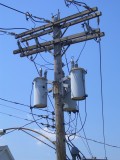How to Spot Counterfeit Currency
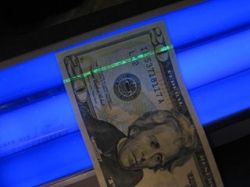
Detecting Counterfeit U. S. Currency
Despite what many people think, the amount of counterfeit currency in circulation in the United States is very small-only 3/100ths of 1 percent of total currency. In part, that's because the U. S. Secret Service thoroughly investigates all reported counterfeiting cases, and because there are harsh criminal penalties for counterfeiting or passing fake bills. Perhaps more than anything though, counterfeiting is difficult because of the bill's security features, which are hard to reproduce but easy to use to verify your money's authenticity. This lens gives some general tips on how to spot counterfeit U. S. currency.
Public domain photo courtesy Wikimedia Commons
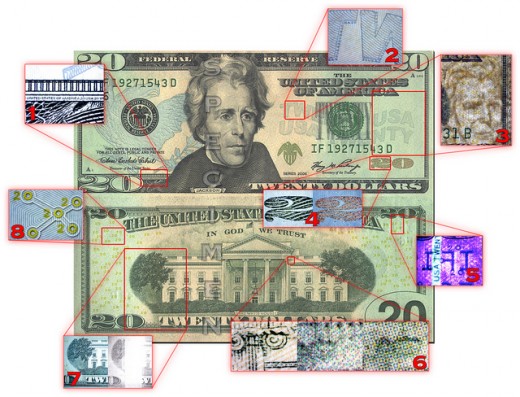
Know Your Currency
The U. S. Secret Service recommends that you educate yourself in regards to the proper positioning of key features on the most common paper currencies. These public domain images (courtesy U. S. Secret Service) show the correct positions of fifteen different features of the modern $10, $20 and $50 U. S. bills.
Counterfeit Detection Tools
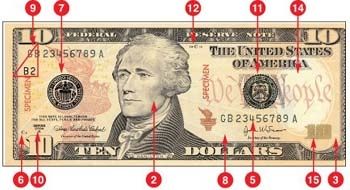
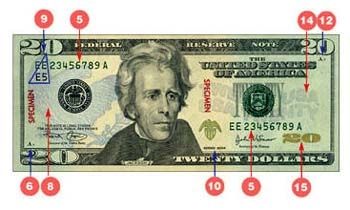
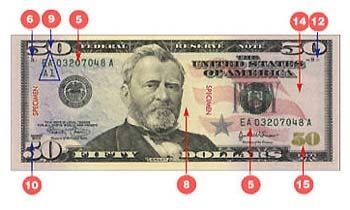
Counterfeit Poll
Have you ever (unknowingly, of course) been stopped trying to pass a counterfeit bill?
Do NOT Break This Bill!
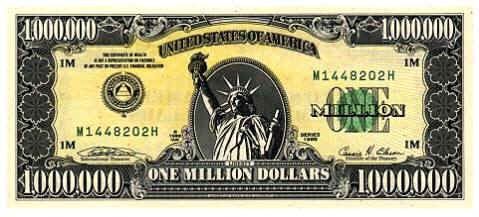
If somebody approaches you on the street and asks "Psst, hey buddy-can you break this?" Then they show you a million dollar bill similar to this one, do NOT make change for them. The U. S. Treasury has never issued a bill of this denomination!
Creative Commons image courtesy Flickr/Simon Davison
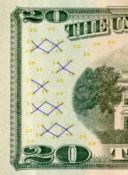
General Counterfeit Spotting Tips
****The 2004 series of bills brought on some big changes. The $10, $20, and $50 bills were redesigned with several tweaks to their overall look, most notably the addition of more colors. It's quite likely the most critical new security feature is the addition of Constellations (see right photo), a specific arrangement of symbols or numbers which makes many color photocopiers to refuse to copy the bill.
****The $1 and $2 bills have fewer security features than other denominations. This is rarely an issue because fakers seldom attempt to manufacture these smaller bills.
****It's a misnomer that if the ink smears when you rub the note on something, the bill isn't genuine. This isn't necessarily true, but ink that smears doesn't mean the bill is genuine, either.
****The United States Secret Service and the Treasury Department don't advise relying only on a counterfeit detection pen-the kind you often see clerks use in stores. The pens simply indicate whether the a bill is printed on the wrong kind of paper (reacting to the presence of starch). Because of this, they'll catch some counterfeits, but won't detect more hi-tech fakes and will give some false-negatives on real money that's been through the wash.
****Raised bills are a very simple and unsophisticated type of fake notes in which numerals are cut and glued onto a lower denomination bill to make it look like it's a higher denomination. These counterfeits are easy to detect by merely comparing the numbers in the corners to the denomination printed in letters at the bottom part of the currency.
****The ink used in U.S. currency is actually magnetic, but this is not a method for detecting counterfeits. The power is quite faint and is only helpful for automatic bill counters. If you use a magnet you cannot lift a real bill, but you can clearly see that it is magnetized.
Public domain photo courtesy Wikihow
Links to Additional Counterfeiting Info
- HowStuffWorks "How Counterfeiting Works"
Counterfeiting has become easier with the availability of quality scanners and printers. Learn about counterfeiting and the Treasury's measures to prevent it. - Counterfeit Detection: A guide to spotting counterfeit currency
A site to learn all about the structure of a bank note and how to spot a counterfeit. - How to spot counterfeit money | Wise Bread
The amount of counterfeit money in the US is low enough that most people feel safe taking money with barely a minimal check for counterfeits ... - Counterfeit Money Detection and Currency Loss Prevention-Fraud Fighter
Fraud Fighter offers fraud prevention solutions to protect businesses of all sizes from counterfeit fraud and identity theft.
The $200 Bill????
Believe it or not....
++In 2001, a man bought a sundae at a Danville, Kentucky, Dairy Queen with a $200 bill featuring President George W. Bush and received $197.88 in change.
++In September 2003, a North Carolina man named Travis Martin used a $200 bill at a Food Lion to purchase $150 in groceries; the cashier accepted the fake bill and presented Martin with $50 in change.







